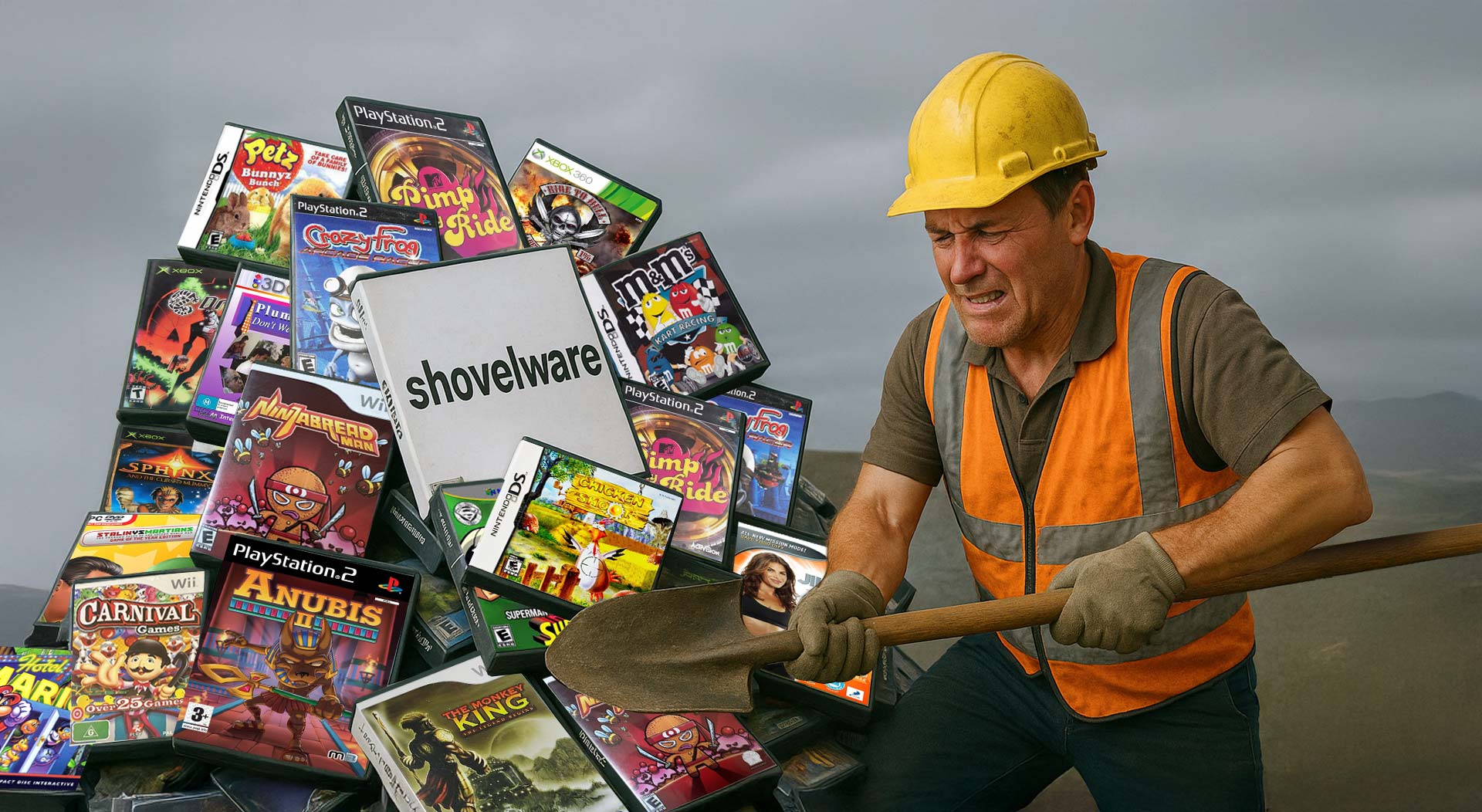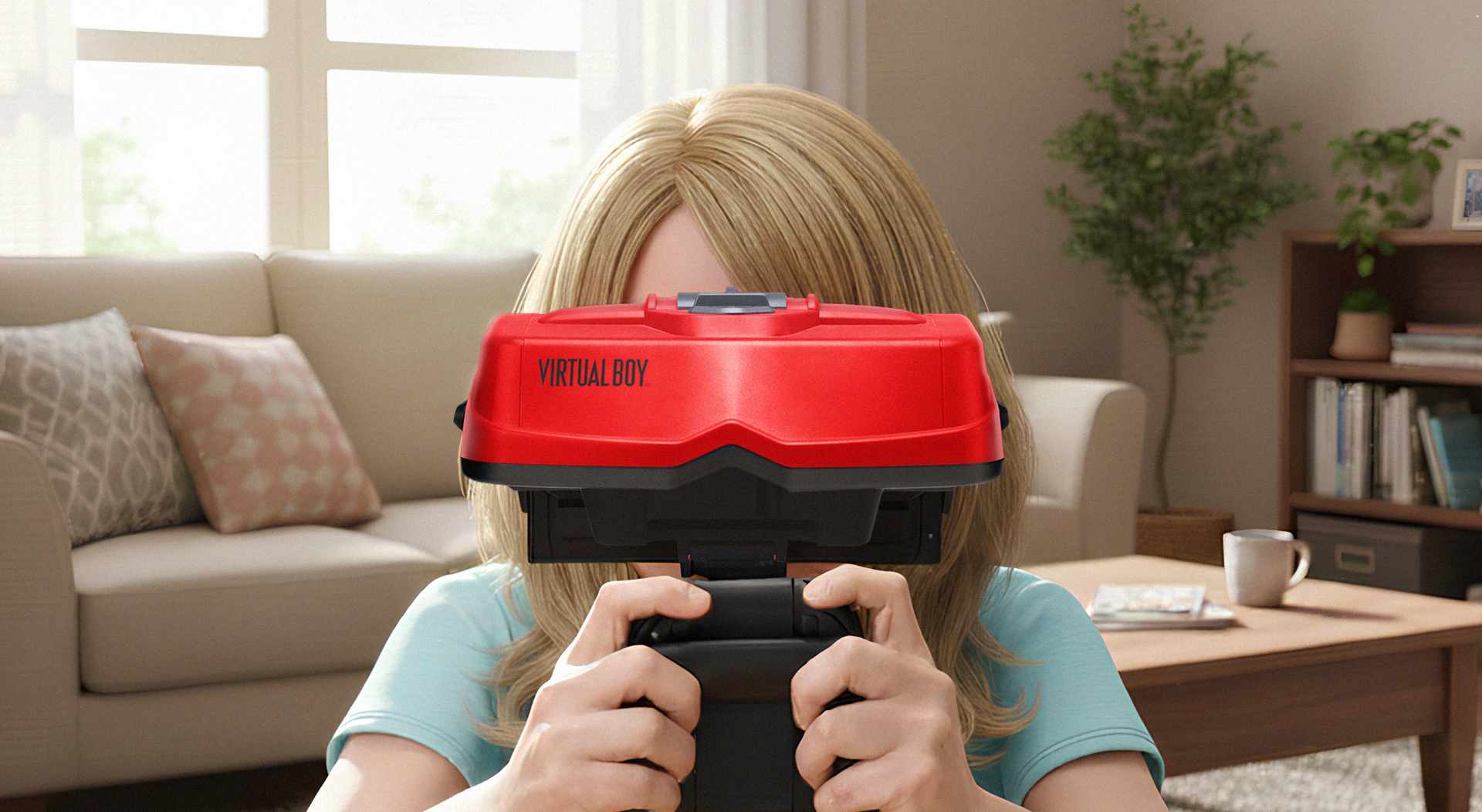“Shovelware” refers to video games produced quickly and cheaply, often prioritising quantity over quality. These games flooded store shelves and digital marketplaces, especially during the mid-2000s, when casual gaming boomed and console libraries exploded.
This article explores the history of shovelware, why it became so common, the consoles most affected, and a ranked list of the 20 most infamous shovelware games ever released.
What Is Shovelware?
Shovelware games share several common traits:
Low production values – Cheap graphics, poor optimisation, and minimal testing.
Rushed development cycles – Often built in weeks or months.
Licensed over original – Heavily reliant on movies, TV shows, and celebrities.
Mass bundling – Sold in bulk packs or aggressively discounted.
Targeting casual gamers – Marketed toward parents and first-time buyers.
The Wii Era: Shovelware’s Golden Age
The Nintendo Wii (2006) is widely seen as the peak of the shovelware era. With its motion controls and mass appeal, the Wii attracted developers hoping to cash in on inexperienced players.
Its success created a flood of poorly made games, many ending up in bargain bins within weeks of release.
Infamous Wii Shovelware Examples
Ninjabread Man (2007) – Broken controls, short levels, and frustrating design.
Carnival Games (2007) – Sold well but was criticised for repetitive minigames.
Anubis II (2005) – Reused assets from other Data Design Interactive titles.
M&M’s Kart Racing (2008) – Widely mocked for bizarre controls and clunky racing.
Celebrity Fitness Tie-ins – Games like Jillian Michaels Fitness Ultimatum became infamous for being unplayable.
By 2010, the Wii’s library had over 1,500 games, but a huge portion were considered shovelware that diluted the console’s reputation.
Nintendo DS and 3DS: Portable Piles of Shovelware
Alongside the Wii, the Nintendo DS (2004) and 3DS (2011) were also flooded with low-quality games. Developers exploited the stylus controls and low development costs to push out quick, cheap titles.
Common Shovelware Trends
Pet Simulators – Endless variations like Petz Hamsterz Bunch and Horsez 2.
Movie Tie-ins – Quick adaptations of films like Shrek the Third and High School Musical.
Educational “Edutainment” – Thinly disguised flashcard apps repackaged as games.
PlayStation, Xbox, and Digital Storefronts
While Nintendo platforms were hit hardest, PlayStation and Xbox also saw their share of shovelware:
The PlayStation 2 had one of the largest libraries ever, packed with budget compilations and rushed movie tie-ins.
The PS3 and Xbox 360 era introduced digital storefronts like PlayStation Store and Xbox Live Arcade. While these brought great indie games, they also opened the floodgates for asset flips, low-effort mobile ports, and trophy-farming “games” designed purely to collect achievements.
PC and the Digital Boom
On PC, shovelware originally came in the form of cheap CD-ROM bundles packed with dozens of puzzle games, racing knock-offs, and shooters.
With the rise of Steam and other digital marketplaces, a new wave of shovelware emerged:
Asset flips – Games built entirely from pre-made store assets.
Mobile ports – Low-effort phone games hastily repackaged for PC.
Copycat clones – Cheap knock-offs of hits like Minecraft and Flappy Bird.
The 20 Most Infamous Shovelware Games
Here’s a ranked list of shovelware titles that became notorious for their poor quality:
Ninjabread Man (Wii) – A broken platformer often cited as the ultimate shovelware example.
Anubis II (Wii) – Re-skinned assets from Ninjabread Man, equally criticised.
Chicken Shoot (Wii, DS) – Blasted by critics; one of the lowest-rated Wii games ever.
Vroom in the Night Sky (Switch) – Poor translation, confusing controls, and just 17/100 on Metacritic.
Plumbers Don’t Wear Ties (3DO, MS-DOS) – A bizarre FMV “adventure” mocked for decades.
Hotel Mario (Philips CD-i) – Infamous for awkward cutscenes and unresponsive controls.
Superman 64 (Nintendo 64) – Universally panned for glitches and frustrating objectives.
Crazy Frog Racer (PS2, DS) – A quick cash grab based on the mobile ringtone fad.
Drake of the 99 Dragons (Xbox) – Broken controls and incoherent storytelling.
Bubsy 3D (PlayStation) – Clunky controls and dated visuals cemented its bad reputation.
Pimp My Ride (PS2, Xbox 360) – Based on the TV show, infamous for repetitive gameplay and poor design.
Yaris (Xbox 360) – A free advergame for Toyota that critics slammed for its blandness and glitches.
Stalin vs. Martians (PC) – A parody RTS that failed to function as an actual game.
Ride to Hell: Retribution (Xbox 360, PS3) – Criticised for bugs, sexism, and clunky mechanics.
The Monkey King: The Legend Begins (Wii) – A sloppy scrolling shooter with broken mechanics.
Carnival Games (Wii) – Sold millions but became a symbol of Wii-era shovelware.
M&M’s Kart Racing (Wii) – Criticised for poor physics and confusing objectives.
Stroke the Hamster (PlayStation Store) – One of many trophy-hunting “games” made in under 30 minutes.
Stroke the Beaver (PlayStation Store) – A near-identical clone of the above.
Platinum “Petz” Series (DS) – Oversaturated the market with countless nearly identical pet sims.
Where Shovelware Thrived
Nintendo Wii & DS – The peak platforms for low-quality releases.
Nintendo Switch – Early titles like Vroom in the Night Sky gave it a shaky start.
Philips CD-i & 3DO – Loose licensing resulted in infamous disasters like Hotel Mario and Plumbers Don’t Wear Ties.
PlayStation & Xbox Stores – Lax digital curation encouraged trophy-hunting shovelware.
PC – Steam’s open publishing system led to thousands of asset flips and clones.
Final Thoughts
Shovelware thrived where demand outpaced quality control, dominating consoles like the Wii and DS and later shifting to digital platforms like Steam and PlayStation Store.
These games were often forgotten quickly, but some became cult classics for being so bad they’re good.





